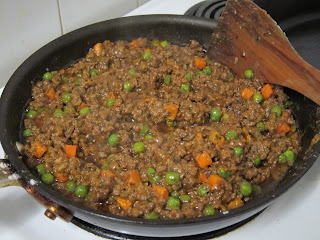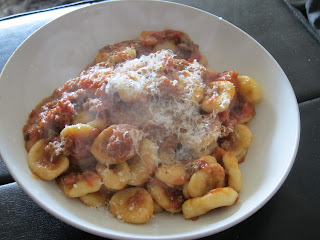I have been using my time without a full time job to take the time to do some
D.I.Y. from Scratch recipes like our Grandparents did before everything came in a convenient package.

1. BREAD

People used to bake their own breads or get it from their local Bakery. When was the last time you saw a local Bakery in your neighbourhood? More than likely you get your bread from a huge supermarket that gets it shipped from who knows where and if you are lucky they might bake it probably from a ready made dough on site. There is nothing better than the smell of freshly baked bread. It makes your place feel like HOME.
I have been trying to perfect a No Knead dough recipe that has been going around. What I need to perfect is how to make it without spilling flour all over myself and my kitchen. I think I got the bread almost perfect now. It's not exactly no knead in my books because you still have to semi roll it out and then form a ball and it's a long process. It takes about 20 hours of resting time and approx. 25 minutes to bake. But this is what it looks like after taking it out of a dutch oven.
2. PASTA


The next thing I attempted is to make Pasta or specifically Orrechiette which is "little ears" in Italian.
I used a combination of Semolina flour and all purpose flour but I think I should have added eggs to make it a bit lighter. It turned out a bit chewy. I used equal parts of semolina and flour and then added
water. I will try it with just semolina next time and see how it turns out.


What I realized from this experiment is that it's a whole lot easier to just pick up a box of great pasta as it's less of a mess and a whole lot less time consuming. But when it comes to making GNOCCHI the DIY way is way better than the frozen version as it makes Gnocchi that are as light as pillows instead of frozen rocks.
3. PIZZA
And the last thing in the Bread and Pasta attempt from scratch was a Pizza dough and pizza made from '00' flour from Italy.
This is another one that I haven't perfected yet but it did work. When I was a kid my best friend's mom who was from Italy used to make fresh pizza dough on a saturday night and we would cut up the toppings and put it on the pizza and then she would bake it off for us. It was the best Pizza I ever had anywhere. It was light but had a crunchy bottom crust, more like a focaccia bread but it was delicious with fresh toppings and crushed tomatoes
instead of a commercial sauce.

I want to get to the point where my homemade version brings me back to that great tasting pizza dough that I remember as a kid. It wasn't the wood oven type of thin crust but a thick and light crust that just tasted fresh and great. This one take a lot more elbow grease to knead the dough even if you use a mixer you still need to stretch out the dough.
Although it's a whole lot more work trying to make these things from scratch the one thing you get when you make them is the Pride that you DID IT YOURSELF and if you master these recipes you will know that you can whip up an amazing dish just with a little flour, some water, maybe some eggs and add a little tomato sauce and cheese and you have some GREAT FOOD.
Everyone should know HOW to DIY some basic
recipes that our Grandparents made on a regular basis and didn't even think they had an option to do it any other way.
Teach your kids or grandchildren these skills so they don't die off with future generations.
The way things are going with our foods and the trust factor of mass producers it's nice to know that you can try and get a few ingredients and make things yourself and know what is going into them and control what you eat and how it's made a whole lot more. While I doubt we are ever going to grow our own wheat and grind it, this still reduces the risk of what goes into our bodies. Of course if you have an opportunity to have a garden or a farm then you know that you have the option to control a lot of what you make from scratch.
I am not suggesting you spend all day in the kitchen making everything from SCRATCH but I am suggesting that you KNOW HOW to DIY and know how it's made and know that you CAN DO IT.
I know that I CAN and have the choice to do it or not now. DIY and feel the Pride!





















